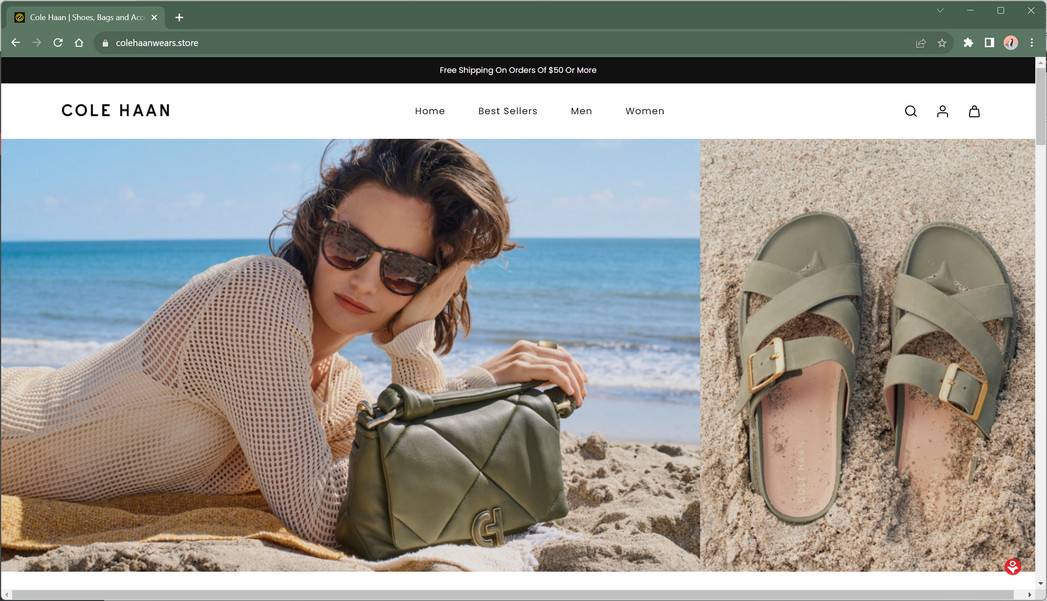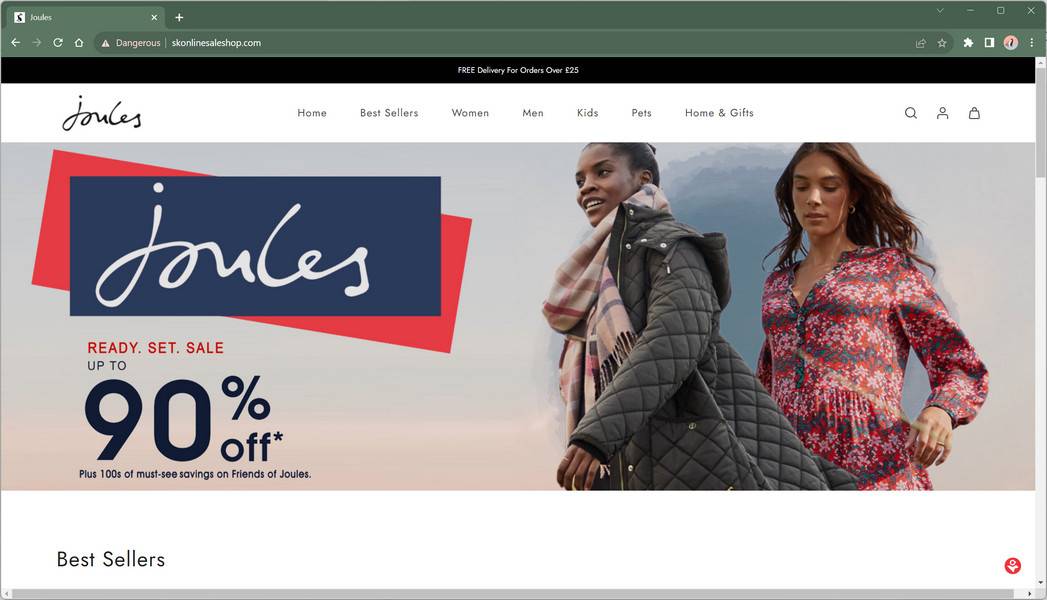Online shopping has opened up a world of convenience and bargains, but it has also given rise to clever scammers operating fake e-commerce websites. A disturbing new scam has emerged where unsuspecting shoppers order goods through fraudulent sites impersonating real retailers. Instead of receiving the items purchased, victims receive cheap unsolicited merchandise in the mail sent from a suspicious address in Bryan, Texas.
In this article, we will explore how the scam works, how to identify fraudulent sites, and steps to take if you have fallen victim. With awareness and vigilance, shoppers can avoid being targeted and protect their personal and financial information.
Overview of the Scam
A worrying new scam has emerged where consumers order products online from fraudulent websites impersonating legitimate retailers. Instead of the items purchased, they receive cheap, unsolicited merchandise in the mail sent from 5572 Silver Hill Road in Bryan, Texas 77807.
Victims report ordering goods like Lululemon leggings or MacBooks from sites that appear to be well-known stores like Nordstrom Rack or Best Buy. However, after placing orders and receiving confirmation emails, packages arrive containing random, low-value items like counterfeit makeup or old electronics. The items are being shipped from 5572 Silver Hill Road in Bryan, which is a residential address.
It appears scammers set up fake e-commerce sites, take order payments, and never fulfill actual purchases. The unsolicited items sent instead only add insult to injury. This scam causes financial loss from stolen order payments and headaches dealing with fraud charges.
Recipients have found it extremely difficult to track down the scammers or recover lost money. The domains vanish quickly after orders, and contacting the Bryan, TX address provides little help. Customers should be vigilant that the sites they patronize are legitimate to avoid this scam. Look for the signs of fraudulent websites outlined below.
How the Scam Works
The scam unfolds in the following manner for victims:
- A customer sees an advertisement on social media or search engines for a popular retailer like Lululemon or Nordstrom Rack. The link goes to a website that looks exactly like the real store, but the URL is slightly altered.
- They browse the site and place an order for products, often high-value items like smart watches, appliances, or designer clothing offered at amazing discounts. The website has convincing photos and descriptions just like legitimate sites.
- After completing checkout and entering payment information, they receive an order confirmation email with tracking numbers from the sham store site. Everything appears normal.
- A few days later, a package arrives from 5572 Silver Hill Road in Bryan, TX. But instead of their expensive purchase, it contains a cheap item like an off-brand phone charger or counterfeit makeup product.
- When the customer tries to visit the store site again, they find the URL disabled and all traces of it gone. Emails to the company go unanswered. The scammers have taken the money and disappeared behind the fake site.
- To add insult to injury, the victim soon discovers unknown charges or fraudulent activity on the payment card used for the purchase. The scammers have now gained both the order revenue and ability to steal the customer’s identity.
- Calls to the Bryan, TX address listed as the sender yield no further information about the scam company or where they are located. The victims’ money is long gone.
This scam shows the risks of online orders from unfamiliar sites. Customers must verify legitimacy before entering any sensitive data. Be especially wary of unbelievable deals. If an offer seems too good to be true, it very likely is.
How to Spot This Scam
While scam sites appear convincing at first glance, several red flags can help identify their fraudulent nature:
Check for a Legitimate Domain Name and Company Details
- Fake sites often have domain names with odd spellings, extra words or use popular brand names. Search the company name online to confirm they are real.
- Check that a physical business address, working customer service phone/email are provided. Lack of real contact details indicates a shady seller.
Look for Overly Good-to-Be-True Deals
- Scam websites lure customers by advertising extravagant discounts of 50-90% off or deals well below market prices. Real businesses cannot sustain such heavy losses. If the deal looks too good to be true, it likely is.
Verify Company Reputation
- Search the website, business name and owner names online for any negative reviews or scam reports. Check with BBB, TrustPilot and complaint forums to see their reputation.
- No social media presence and zero signs of real customer activity on review sites signal likely frauds.
Analyze Site Security and Payment Options
- Ensure sites connect with SSL encryption and have guaranteed refund policies. Unsecured sites should not handle payments or sensitive data.
- Scam websites tend to only take irreversible payments like wire transfers, gift cards, cryptocurrency and avoid credit cards with stronger fraud protections.
Spot grammar errors, plagiarized policies, limited products
- Fake sites lack effort invested into proper grammar and original legal policy writing seen on established businesses.
- Very limited product selections avoiding common best-selling items categories also indicates pop-up scams.
Carefully applying these warning signs allows shoppers to expose scam retail fronts seeking solely to exploit rather than serve legitimate customer bases built on accountability and trust.
How to Spot This Scam on Social Media
In tandem with operating entirely fake e-commerce storefronts, retail scam websites heavily leverage sponsored social media ads promoting unbelievable yet highly compelling deals up to 90% off across product ranges in attempts to lure target audiences.
Highly deceptive posts explicitly screaming too-good-to-be-true price cuts frequently overrun Facebook feeds, Instagram stories and TikTok streams with aims of deceiving deal-seeking shoppers. However, certain patterns across these advertisements expose their underlying deceitful intentions.
Spotting Fraudulent Facebook Ads
Beware of too-good-to-be-true deals in Facebook ads like “90% off” or “Free Shipping” that entice people to shop. Scammers know how lucrative Facebook’s 2 billion users can be. Warning signs of a scam Facebook shopping ad:
- Extreme discounts such as “Store Closing Sale” or “Going out of Business” that seem suspicious for a newly created page. Legitimate businesses usually don’t heavily discount new inventory.
- Language and grammatical errors or inconsistencies throughout the ad or website. This signals the scammers likely quickly generated the content.
- Generic stock images of products rather than real images. Or images with watermarks that the scammer likely didn’t have rights to use.
- Very recent Page creation date shown under the Page name. Scam sites don’t last long before users report them or Facebook removes them.
If an ad or Page sets off warning bells, search for reviews of the website before purchasing. Or reverse image search any product photos to see if they were stolen from another site. Don’t support scammers taking advantage of Facebook users.
Spotting Fraudulent Instagram Ads
Scam online shopping sites try luring Instagram users with attention-grabbing captions like “Limited Time Offer!” and enticing prices such as “Today Only $39”. But is the Instagram shop legit or a scam? Signs to help determine:
- The account has very few posts and followers. Scams setup disposable accounts that get deleted once reported.
- Check user tags on the posts. If real people aren’t shown wearing or using the products, that’s a major red flag.
- Tap on the shop link in the bio. If there’s no HTTPS or SSL certificate, it’s not secure to enter payment information.
- Reviews seem fake or non-existent. Scam sites don’t have much satisfied customer proof.
- Limited or vague return policy information. Or difficult channels to request a return.
Trust your instinct if an Instagram shop seems fishy. Check independent review sites first before buying through an unknown seller advertising on Instagram. Protect your personal and payment information entering it only on secure sites after verifying legitimacy.
Catching Fake TikTok Ads
Scam TikTok shopping sites try attracting traffic using compelling videos showcasing unbelievable deals. But amazing discounts and prices may bait unsuspecting TikTok users into a scam. Be wary of:
- Links in the caption or videos bringing users to store sites no one’s heard of. Scammers setup temporary sites that won’t be around long.
- No blue checkmark verification badge on the account. This signals TikTok hasn’t authenticated the authenticity of the seller.
- Prices drastically slashed with countdown timers pressuring purchase decisions. Scare tactics rush rational judgement.
- No reviews or evidence showing real customers enjoying the products. Easy with video testimonials to fake satisfaction.
Check comment sections on TikTok scam shopping site videos for warnings from others getting duped. When prices seem too good to be true, they most likely are. Verify legitimacy before handing payment info to unknown sellers promoting on TikTok videos. Your security comes first.
What to Do If You Have Fallen Victim
If you have fallen victim to this scam, you should take immediate action to protect yourself and your money. Here are some steps that you can take:
- Contact your bank immediately – Alert your bank to disputed charges and consider canceling your card to prevent further fraudulent purchases.
- Keep records – Save receipts, emails, screenshots, and any details related to the transaction. This provides proof of the scam.
- File a complaint – Report the fraud to the FTC and Internet Crime Complaint Center. Provide any relevant records.
- Leave online reviews – Post details of the scam on consumer review sites to warn others. However, don’t defame legitimate businesses.
- Report social media accounts – If the scam involved social media, report the accounts to get them removed.
- Reverse payments – If you paid with a credit card, request a chargeback. For wire transfers, contact the recipient bank to possibly reverse it.
- Check credit reports – Request credit reports to check for any accounts opened fraudulently using your information. Consider placing a credit freeze if needed.
- Reset account passwords – Change passwords on any online accounts that used the same login credentials entered on the scam site.
- Check your device for viruses – Run a Malwarebytes Anti-Malware Free scan to check for any malware that may have infected your device through the site.
- Learn from the situation – Study how you were deceived so you can avoid other scams in the future.
Being vigilant against shopping scams and acting quickly when scammed can help limit financial and identity theft impact. Report it to help authorities investigate and shutdown scam sites that are still active.
Frequently Asked Questions
What types of products do the fraudulent sites sell?
Reported scam websites primarily mimic luxury retailers and popular electronics stores. Examples include fake versions of Lululemon, Louis Vuitton, Apple, Best Buy, Nordstrom Rack, and Dyson. The scam sites tempt victims with hot items like smartphones, game consoles, and designer fashion at amazing low prices.
What are some examples of items victims receive?
Instead of expensive electronics, housewares, or apparel they purchased, victims report receiving random junk like old phone chargers,used makeup and skincare products, counterfeit designer accessories, and cheap clothing like knockoff t-shirts. The items seem completely random and essentially worthless.
Can I get my money back if I fall for a fake website?
Unfortunately, it is very rare to recover any lost payments sent to scammers. Fake sites quickly disappear after receiving order payments, and requester sender addresses are dead ends. Your best chance is reporting unauthorized charges to your bank as soon as possible and cooperating fully with fraud investigators. Preventing future identity theft is also crucial.
Are the scammers ever caught and held accountable?
Very few scam victims successfully identify or take legal action against the perpetrators. These complex online fraud schemes are notoriously difficult for authorities to trace. Often the fake sites and addresses lead nowhere. However, reporting details can help authorities potentially piece together patterns and connections. The more victims speak up, the better chance there is of catching scammers eventually.
Is it legal for scammers to just keep my money and send nothing?
No, these scams are completely illegal. The problem lies in locating, identifying, and proving the perpetrators committed fraud. That’s unfortunately where most victims hit a wall. With the anonymity of the internet, proving who exactly is behind fake sites and where they are can be nearly impossible for individual consumers. Still, reporting all details to authorities at least creates a paper trail.
What are some precautions I can take to shop online safely?
- Only use secure websites you know and trust
- Look for signs of spoofing like slight URL alterations
- Verify security seals and certificates
- Research unfamiliar sites extensively first
- Price check unbelievable deals elsewhere
- Pay only through secure methods like credit cards
- Monitor accounts closely afterwards for any unauthorized activity
Summary
This e-commerce scam shows why caution is mandatory when shopping online today. We must think critically and watch for red flags indicating fraud. Verify every site you use is legitimate before providing any sensitive information. Don’t let unbelievable prices or designer knockoffs cloud your judgment when shopping online. Preventing these scammers from striking in the first place is the best way to stop more victims from receiving worthless junk instead of their coveted orders.













